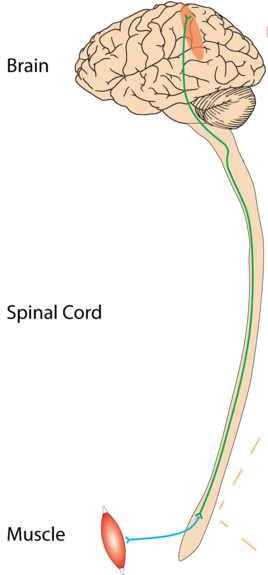Module 2: Movement
How We Move
Infant Motor Development

In infancy, movement begins with primitive reflexes such as sucking and swallowing. In the image to the right, this young infant demonstrates the presence of a typical Asymmetrical Tonic Neck Reflex (ATNR). When the infant’s head is turned to one side, the limbs on that side of the body automatically straighten, and the limbs on the other side bend. This is an involuntary pattern of movement.
As the brain matures and development progresses, reflexes are replaced by more voluntary movements. We will discuss later what happens when primitive reflexes are retained, and how they can interfere with voluntary movement.
Infant motor skills generally develop in a predictable sequence, including rolling, sitting, crawling, standing, and walking. Each developmental skill builds upon the previous skill, like building blocks.
At each stage, the body becomes more stable and able to move against the resistance of gravity. The muscles closer to the middle of the body develop first, creating a stable foundation for the muscles of the limbs. For example, the muscles in the shoulders need to develop first to provide stability to effectively control the hands. The muscles of the trunk and pelvis provide the stability for walking. This ability to move independently and explore with their hands enables infants to learn about their world.



In the video below, watch the baby learning to crawl and think about the complex processes at work in their brain and body.
Consider:
- What movements would they have developed before crawling?
- Which movement skill will develop next?
- How might the ability to move independently give them more opportunities to learn?